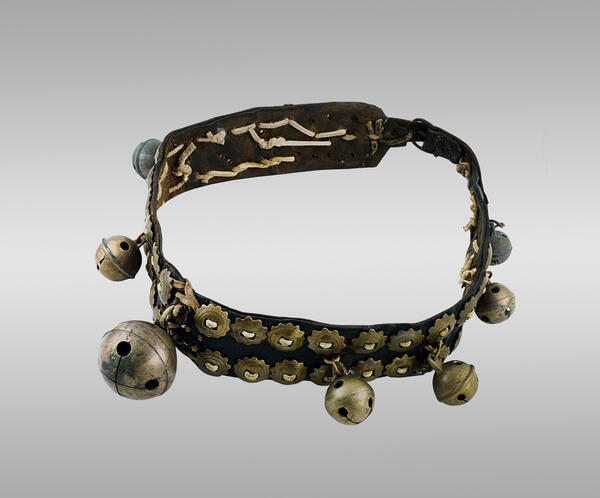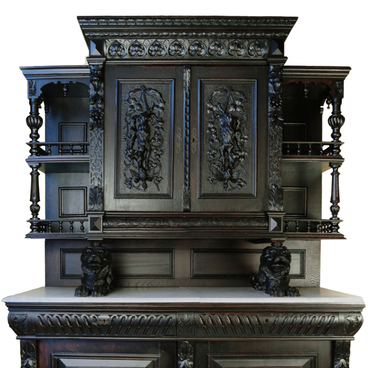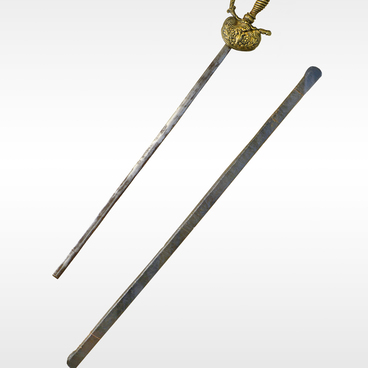In the old days, a strip with bells, worn around a horse’s neck, was called a collar. It also had other common names — brazun, neckstrap, or podgarok. The collar was made as a set of bells that were attached to a leather rawhide belt with a felt backing. It was fastened with a buckle.
The largest bell was called “sharkun”. It consisted of a spherical metal bell with one or two pellets inside. The bell rang in motion.
The sharkun was in the middle of the collar, under the horse’s neck. Sometimes it was replaced by a conical bell under the neck. Two identical bells smaller in size were symmetrically located to the right and left of the sharkun. They were followed by several even smaller balls, and so on.
Each bell was attached to the band by an eyelet — a metal loop through which a rawhide strap was pulled through. The lower part of the ball had slots in the form of several thin intersecting lines with round holes — eyes — at the ends. As a result, the bell sounded louder. Bells were usually selected by a sound. Therefore, a melodic ringing was heard when the horse moved.
The collar was used as an element of festive harness both in rural areas and in cities. Bells were worn on horses during the solemn leaving of the groom for the bride before the wedding ceremony, going to Maslenitsa (holiday week before Great Lent) festival skiing, or visiting someone on special occasions.
Collars with bells appeared in Russia at the beginning of the 19th century, although bells themselves existed even in ancient times. They became especially popular only in the middle of the century: then they were worn on horses instead of bells located under the shaft bow.
The postal authorities forbade private crews to use the traditional bells. The bells could only be hung on postal triplets that carried mail or passengers along state roads.
The collar, presented in the collection hall of the Oryol Museum of Local History, was purchased from the Oryol antique store in 2011. There is an inscription on the largest bell at the bottom of the collar:
The largest bell was called “sharkun”. It consisted of a spherical metal bell with one or two pellets inside. The bell rang in motion.
The sharkun was in the middle of the collar, under the horse’s neck. Sometimes it was replaced by a conical bell under the neck. Two identical bells smaller in size were symmetrically located to the right and left of the sharkun. They were followed by several even smaller balls, and so on.
Each bell was attached to the band by an eyelet — a metal loop through which a rawhide strap was pulled through. The lower part of the ball had slots in the form of several thin intersecting lines with round holes — eyes — at the ends. As a result, the bell sounded louder. Bells were usually selected by a sound. Therefore, a melodic ringing was heard when the horse moved.
The collar was used as an element of festive harness both in rural areas and in cities. Bells were worn on horses during the solemn leaving of the groom for the bride before the wedding ceremony, going to Maslenitsa (holiday week before Great Lent) festival skiing, or visiting someone on special occasions.
Collars with bells appeared in Russia at the beginning of the 19th century, although bells themselves existed even in ancient times. They became especially popular only in the middle of the century: then they were worn on horses instead of bells located under the shaft bow.
The postal authorities forbade private crews to use the traditional bells. The bells could only be hung on postal triplets that carried mail or passengers along state roads.
The collar, presented in the collection hall of the Oryol Museum of Local History, was purchased from the Oryol antique store in 2011. There is an inscription on the largest bell at the bottom of the collar:



